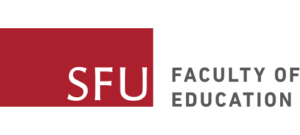For information contact Dr. Gillian Judson, Assistant Professor, Educational Leadership ([email protected])
What is the role of imagination in educational leadership? How does it fuel innovation and creativity and how do we maximize it?
How can the imagination deepen school leaders’ understanding of educational issues?
How can the imagination support the generation of new ideas in educational leadership?
How can school leaders employ tools of imagination to increase the collective capacity for imagination and creativity in their school communities?
A Message from Dr. Gillian Judson
These are the questions I explored earlier this year with seven school leaders in a rural school district in Georgia, U.S.A. I introduced the notion of cognitive tools to these school leaders. We explored how cognitive tools engage imagination, why they help human beings think, and also how they can be used effectively by innovative leaders.
Imaginative leaders don’t just have creative ideas—they demonstrate openness to possibility in their practice. Imaginative leaders understand that human beings are perfinkers—we never just think but we perceive, feel, and think at the same time. (My TEDx talk explains what a perfinker is.) When we acknowledge our teachers, our students, our parents—everyone in the school community—is an emotional and imaginative being, then our interactions change. The toolswe employ to understand issues, make decisions, and convey meaning also change. What is crucial, whether in teaching or educational leadership, is that our tools evoke emotion and imagination, two requirements for all learning. Enter: cognitive tools.
(NOTE: The Tips For Imaginative Educators Series provides a description of what cognitive tools are and how they can maximize learning for students PreK through higher education.)
My work with these school leaders employed cognitive tools differently, however. We looked at how using them can contribute to engaging leadership practice and, ultimately, to a school culture that embraces what is possible. This is imagination.
Read more about Imaginative Ed Leadership on imaginED.
